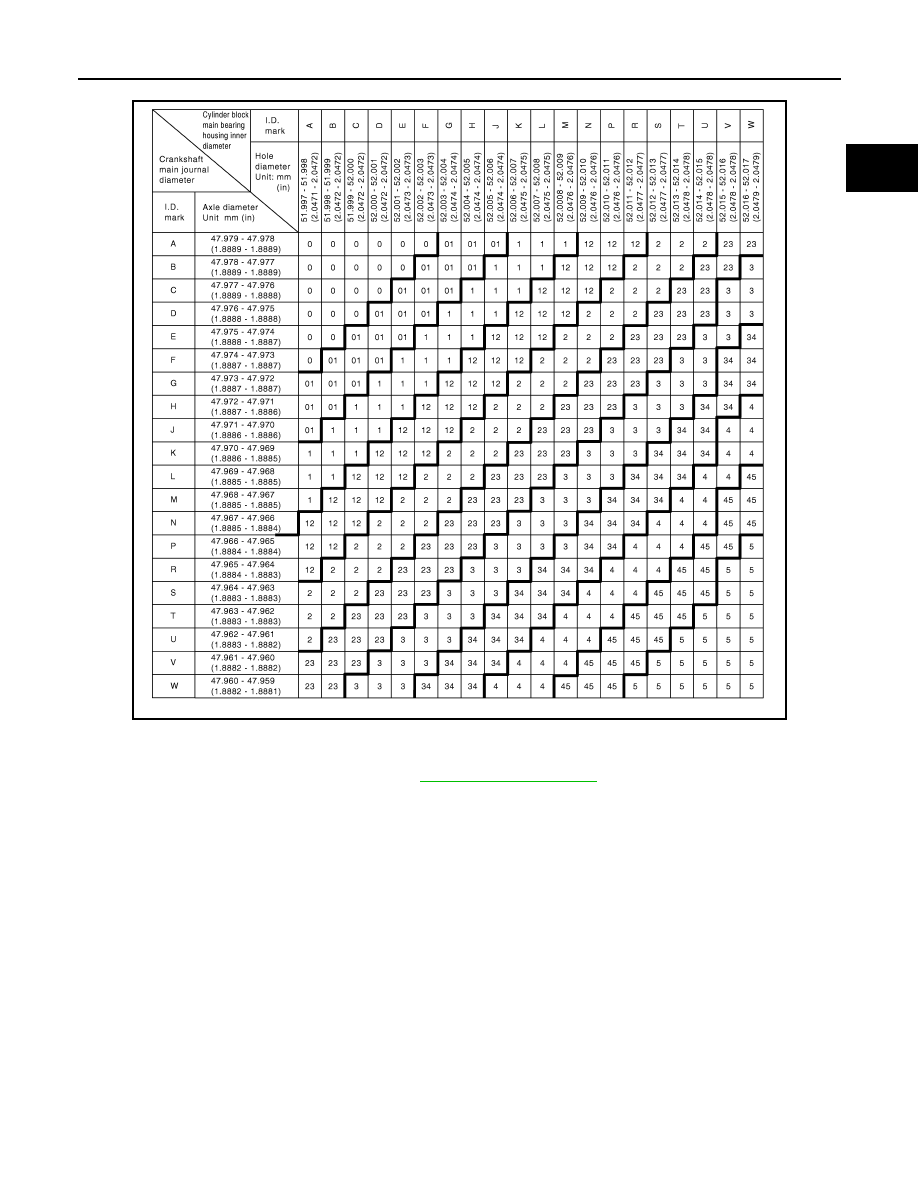Qashqai J11. Engine mechanical (HRA2DDT, K9K, MR20DD) - part 8

HOW TO SELECT PISTON AND BEARING
EM-113
< UNIT DISASSEMBLY AND ASSEMBLY >
[HRA2DDT]
C
D
E
F
G
H
I
J
K
L
M
A
EM
N
P
O
Main Bearing Selection Table
Main Bearing Grade Table
E1BIA1172GB
Main Bearing Grade Table
: Refer to